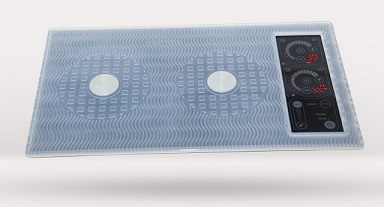
NATIONAL REPORT—When a new Residence Inn by Marriott opened in Denver last month, it did so with fully-equipped guestroom kitchens that each include a radiant electric ceramic cooktop. According to Suzanne Owens, VP, Sales, Kenyon International, Inc.—the company that supplied the cooktops—the hotel’s owners made a wise, green choice because of the energy efficiency of the ceramic cooktops. Compared with gas cooking with average efficiencies of 50 percent, cooking with smooth top ceramic cooktops is 75 to 80 percent efficient. Coil cooktops, still found in many extended-stay hotels, are about 65 percent efficient. While requiring more investment, cool induction cooking systems are nearly 90 percent efficient.
From an environmental standpoint, with cooktops there is more than meets the eye. Because they are not yet rated according to a uniform standard, careful research is required before their purchase. Buying efficient cooktops with fewer replacement and maintenance parts, for example, can translate into both cost and landfill savings.
According to Kenyon International, if a 100-room hotel replaced coil cooktops with ceramic cooktops—assuming $50 per room would have been spent annually to replace malfunctioning coil elements and corroded drip pans—there would be a yearly savings of $5,000 in replacement parts, a savings of about $2,500 in labor to replace the coil elements and drip pans, and a $45,000 savings in housekeeping from reducing cooktop cleaning time from six minutes per cooktop to one minute. The total savings would be more than $53,000. Owens says that does not include intangible expenses such as lower insurance costs due to increased safety.
Match the Voltage to the Cooktop
Those hotel owners opting for ceramic cooktops today have many options and styles from which to choose, and in several voltages—120, 208 and 240. “Match the voltage to the cooktop for optimum efficiency,” Owens says. “Most old coils are 240 and operating on a 208 circuit, which makes them less efficient.”
Owens says her company offers cooktops in three sizes of two burner models and in both landscape and portrait orientations. These include a two burner “trimline”, two burner “large” and two-burner ”XL”. Cooktops are also available in one and four burners. Cooktops with touch controls sans knobs are available. “Go for the most compact cooktop you can, which is the ‘trimline’ size,” Owens says. “Make sure there is adequate space around the heat.”
Kenyon’s SilKEN2 2 Burner Trimline induction cooking system features stainless steel colored graphics, cooking by temperature or power setting, quick heat dissipation and a new silicone mat that covers the entire cooktop and provides pot retention, confines spills and splatter, protects the glass top and is easy to clean—the mat can be placed in a dishwasher.
With an induction cooking system, when you turn on the burner, an electric current runs through the coil, generating a fluctuating magnetic field, but no heat on the burner itself. However, once you set an iron or stainless steel pan on the burner, the magnetic field induces many smaller electric currents in the pan’s metal.
Glenn Hasek can be reached at editor@greenlodgingnews.com.







